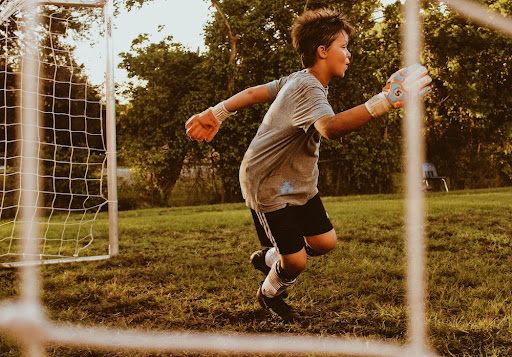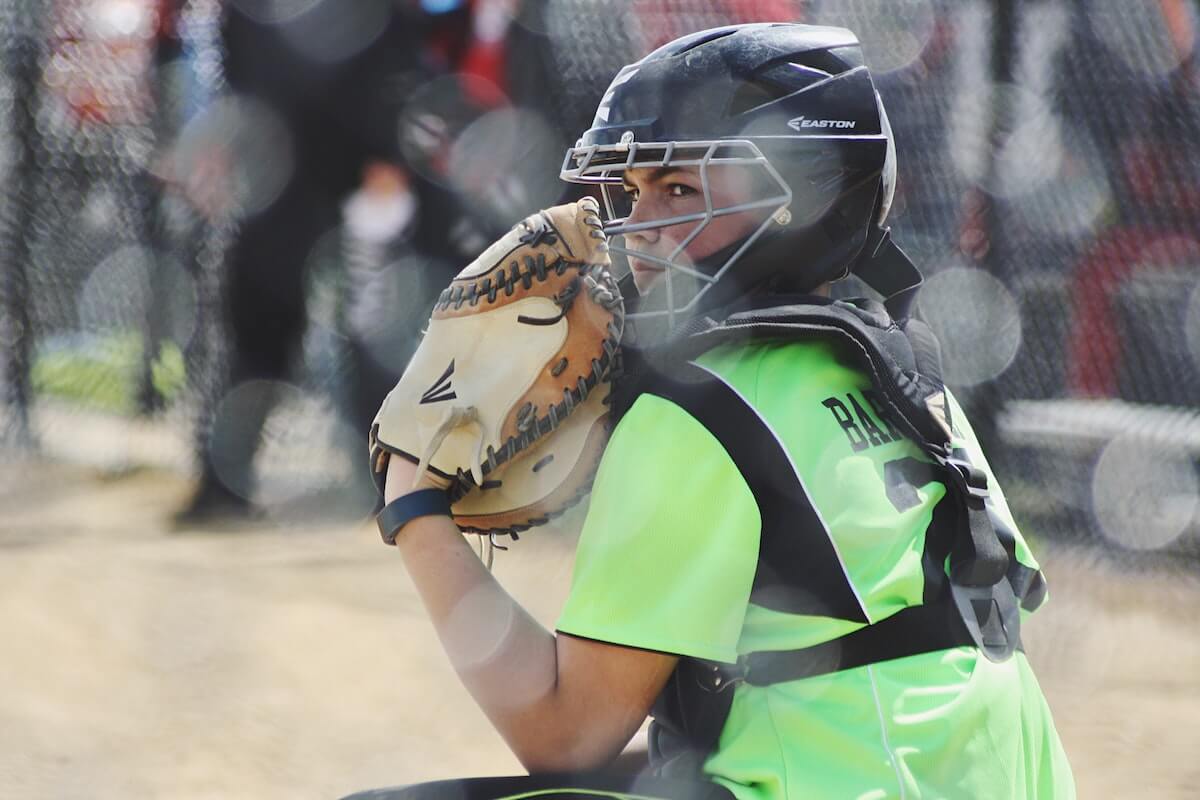We continue National Facial Protection awareness as warmer weather approaches and kids start outdoor activities. If you think face protection is a silly thing to dedicate a whole month to, you might change your mind once you see the statistics:
- Up to 39% of tooth injuries occur in sports
- 75% of mouth injuries occur without the protection of a mouthguard
- More than half of all 7 million sports injuries every year happen to people ages 5-24
Starting in 1962, college and high school football players were required to wear mouthguards and face masks during practices and games. And after that rule was made, facial injuries went from 50% to .5%!
Here’s a run-down of why facial protection for your child is more than worth it — even if they’re just biking, skateboarding, or playing soccer in the backyard with siblings.
The Price of Not Wearing a Mouthguard
About 80% of facial injuries in sports cause damage to the front 2 teeth. This type of injury is noticeable and can be very painful since your front teeth are used often for chewing and speaking.
When it comes to mouth injuries, one small break in a tooth can lead to bigger, more expensive problems down the line. And once your tooth is damaged, it can lead to a lifetime of dental procedures that wouldn’t have been necessary otherwise.
Chipped or cracked tooth
A chipped tooth might require a crown or a manufactured piece that fits over your tooth to act as a protective layer. A crown can range from $800-$1700.
A crack or chip can also make your tooth more prone to infection which is a painful process that puts the entire tooth at risk of decaying.
Knocked out tooth
If a tooth is knocked out, you’ll need to save the tooth and take your child to the dentist immediately so they can try to repair it. If the dentist is unable to repair it, a replacement tooth can cost anywhere from $1500-$3000.
Tooth knocked out of alignment
Some mouth injuries can knock a tooth out of alignment. While this might not seem like a big deal at the time, it could affect the alignment of your entire mouth and, if it gets bad enough, it can lead to needing braces or other orthodontic care.
Internal jaw damage
Even if your tooth is intact and not chipped or cracked, a facial injury could cause internal damage to your jaw.
Root canal
Some dental trauma will require a root canal, a deep treatment in which the root canal of a tooth is disinfected to prevent bacterial infection. These can cost anywhere from $900-$1200.
The solution to the risk of these injuries is simple: facial protection equipment, like a mouthguard and face cages.
What Does a Mouthguard Do?
Mouthguards are a protective piece that your child can fit in their mouth.
While it usually fits around the top row of your teeth, a mouthguard protects the entire mouth. The teeth and jaw are protected thanks to the mouth guard’s ability to take on an impact so your teeth don’t have to.
Soft tissue like your cheeks and tongue are also protected, as your mouthguard covers sharp parts of your teeth that could cut them during an impact.
There are 3 different types of mouthguards to choose from, all of which can help you ensure the safety of your little sport nut.
Stock
- These mouth guards come preformed, and while they do help protect the mouth they aren’t guaranteed to fit correctly.
- These are the least expensive option, at anywhere from $3-$25 each.
Boil and bite
- These come in a solid shape. You can boil them and have your child bite into it for a customized fit.
- These can cost from $15 to $50.
- These can be heated and remolded if children get braces or as their teeth shift.
Custom
- You can get a personalized mouthguard from your dentist that can help guarantee safety.
- Custom mouthguards are the priciest option, ranging from $200-$350 depending on your dentist and dental plan.
And don’t worry about too much maintenance. Care for your mouthguard can be easy:
- Rinse it before and after each use
- Don’t let your child wear it with a retainer
- Encourage your children not to chew on it
- Store it in a container with small holes in it to allow it to dry out properly
- Replace it when you notice it’s getting worn down
What Do Face Cages Do?
When it comes to keeping your child’s mouth safe, some sports call for a bit more protection.
Face cages are protective devices that help prevent injuries by blocking balls, rackets, sticks, and other threats from impacting your child’s face.
In sports like softball, for example, face cages are often required, as the sport has a history of many face and neck injuries. In softball and many other sports, the risk of injury from balls, bats, and other impacts is just too great to play without protection.
Like mouth guards, most face cages come in various types and styles. First, you’ll want to choose the material:
Carbon steel
- Carbon steel masks are heavier and more durable than other materials and is the most popular (and affordable) option.
- Stainless steel has the durability of carbon steel, without the weight. Because of this, it’s a bit pricier.
Titanium
- Typically only used by sports professionals, titanium is even lighter and more durable than stainless steel.
- Titanium is typically more expensive than carbon and stainless steel options.
Then, choose a style depending on your child’s activities:
Closed cage
- Closed cage is for maximum protection. It’s a full-face cage that covers everything but the line of vision.
- They usually have one bar going from the nose down and are crossed with multiple horizontal bard. These are ideal for high-impact roles in sports like defensive linemen in football.
Open cage
- Open cages are used for sports positions that require a larger field of vision. In football they would be for quarterbacks, wide receivers, and kickers. For softball, these would be optimal for catchers.
Isn’t it amazing the difference just a couple pieces of protective gear can make? Your child can skip the painful injuries and embarrassing broken teeth, and you don’t need to pay for any extra dental or orthodontic procedures.
Now THAT’s a win.



